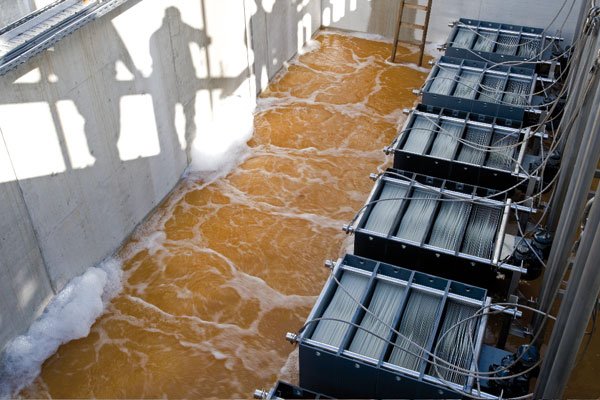
New Wastewater Treatment Technologies
New Wastewater Treatment Technologies: Revolutionizing Water Management
Introduction
As the global population continues to rise, the need for effective wastewater treatment becomes increasingly crucial. According to the United Nations, approximately 2 billion people currently lack access to safely managed drinking water, a situation exacerbated by industrialization and urbanization. Treating wastewater not only recycles water but also mitigates environmental impact and enhances public health. This article delves into emerging technologies in wastewater treatment, examining their functionality, benefits, and implications for future water management.
The Importance of Advanced Wastewater Treatment Technologies
The process of wastewater treatment is essential for converting contaminated water into reusable water. Traditional methods often fall short in addressing the complexities of current pollutants such as pharmaceuticals, microplastics, and other emerging contaminants. As a result, innovative treatment technologies are crucial to meet regulations and societal demands for cleaner water. Key drivers for technology advancement include:
-
Regulatory Compliance: Stringent standards set by organizations like the U.S. Environmental Protection Agency (EPA) necessitate the adoption of more effective treatment solutions.
-
Public Health: Contaminated water can lead to significant health issues. Technologies capable of removing pathogens, heavy metals, and endocrine disruptors are increasingly important.
- Resource Recovery: With a shift toward a circular economy, technologies that enable resource recovery—from nutrients to clean water—are becoming essential.
Section 1: Membrane Bioreactors (MBRs)
Overview
Membrane bioreactors combine biological treatment processes with membrane filtration. This technology allows for the separation of treated water from sludge, significantly reducing the need for secondary clarifiers.
Advantages
- Enhanced Effluent Quality: MBRs produce high-quality effluent that meets stringent discharge standards.
- Space Efficiency: MBR systems require less footprint than traditional treatment methods, making them ideal for urban areas.
Research Findings
A study published in the Journal of Environmental Management indicates that MBRs can achieve removal efficiencies exceeding 90% for biochemical oxygen demand (BOD) and total suspended solids (TSS) (Chen et al., 2021).
Challenges
While MBRs offer numerous benefits, they also present challenges such as membrane fouling and higher operational costs compared to conventional systems.
Section 2: Moving Bed Bioreactor (MBBR)
Overview
MBBR technology utilizes a system of plastic carriers that support a biofilm, enhancing the treatment process through increased microbial surface area.
Advantages
- Flexibility: MBBR systems can be easily integrated into existing wastewater treatment facilities.
- Scalability: These systems can be scaled up or down based on treatment needs, proving beneficial for municipalities with varying wastewater flows.
Data Insights
According to Water Environment Research (Wang et al., 2020), MBBR systems can remove nitrates effectively, achieving removal rates of over 85% under optimal conditions.
Limitations
Though flexible and efficient, MBBR systems might require additional processes for thorough nitrification and denitrification, adding to operational complexity.
Section 3: Advanced Oxidation Processes (AOPs)
Overview
AOPs involve generating hydroxyl radicals to oxidize organic pollutants. Technologies within this category include ozone treatment, UV light, and hydrogen peroxide.
Advantages
-
Effectiveness Against Emerging Contaminants: AOPs can degrade complex organic molecules and pharmaceuticals that traditional methods struggle to eliminate.
- Rapid Reactions: These processes can react within minutes, significantly speeding up treatment times.
Evidence of Success
Research published in Environmental Science & Technology highlights that AOPs can reduce pharmaceuticals in wastewater by up to 99%, making them crucial for advanced treatment strategies (Baker et al., 2019).
Concerns
The main challenges associated with AOPs include high operational costs and the necessity for precise control and monitoring systems.
Section 4: Biological Nutrient Removal (BNR)
Overview
BNR processes focus on removing nitrogen and phosphorus from wastewater. These nutrients, when discharged in excess, can lead to eutrophication in aquatic systems.
Advantages
-
Reduction of Eutrophication: Effective nutrient management helps in preventing harmful algal blooms and maintaining water quality.
- Cost-Effectiveness: When integrated with existing treatment systems, BNR can provide an economical solution for nutrient removal.
Statistical Insight
According to a 2022 publication in Water Research, BNR processes can achieve over 95% removal rates for total nitrogen and phosphorus in municipal wastewater (Zhang et al., 2022).
Limitations
Effective implementation of BNR can require careful monitoring and adjustment of operational parameters to maintain optimal performance.
Section 5: Nature-Based Solutions (NbS)
Overview
Nature-based solutions leverage biological processes and ecosystems to treat wastewater. Constructed wetlands and vegetated systems fall under this category, providing significant environmental benefits.
Advantages
- Sustainability: NbS promote biodiversity and ecosystem services while effectively treating wastewater.
- Cost-Effectiveness: These systems often require lower maintenance and operational costs compared to mechanical systems.
Insights from Studies
Research in Ecological Engineering shows that constructed wetlands can reduce BOD by 90% and promote habitat for local wildlife (Mander et al., 2021).
Challenges
Despite their benefits, NbS may require significant land use and are often site-specific, limiting their applicability in urban landscapes.
Conclusion
Emerging wastewater treatment technologies present innovative solutions to the growing challenges of water management. From the efficiency of Membrane Bioreactors to the sustainability of Nature-Based Solutions, these technologies are pivotal in advancing our ability to treat wastewater and recover valuable resources. The integration of advanced treatment processes not only meets regulatory requirements but also fosters public health and environmental stewardship.
Answering Key Questions
-
What are the benefits of integrating advanced technologies into wastewater treatment?
Advanced technologies enhance effluent quality, reduce environmental impact, and support resource recovery. -
How can municipalities effectively implement these technologies?
Conducting pilot studies, leveraging government grants, and collaborating with experienced technology providers can facilitate effective implementation. - What should facility managers prioritize when considering new technologies?
Key considerations should include cost, scalability, operational complexity, and the potential for regulatory compliance.
By understanding and adopting these innovative technologies, wastewater treatment professionals can significantly impact water resource management in an increasingly challenged world.

